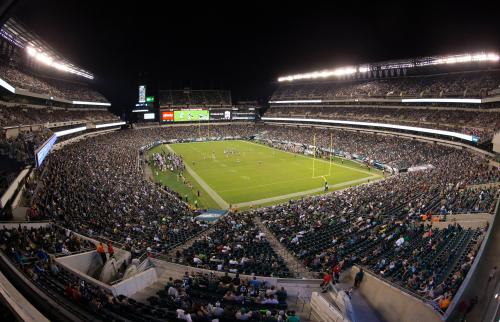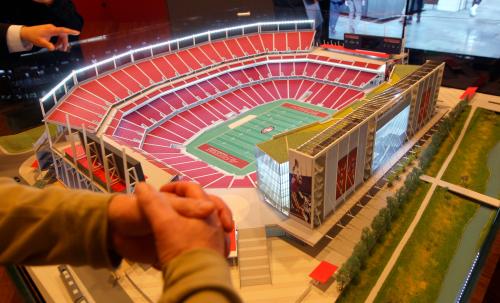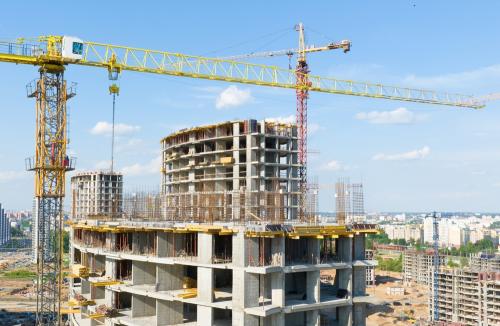It’s no secret that private, professional sports stadiums are increasingly built with taxpayer dollars. Different experts have estimated the total stadium bill from $10 billion to $12 billion in recent years.
Unsurprisingly, adding up the numbers can be tricky business. Stadium deals come in many forms and often include a mix of state, local, and federal subsidies in the form of land, infrastructure improvements, cash payments, tax-free municipal bonds, and more.
It’s the last one, tax-free municipal bonds, on which Ted Gayer, Austin Drukker, and Alexander Gold have focused their research. In a new paper from Economic Studies at Brookings, “Tax-Exempt Municipal Bonds and the Financing of Professional Sports Stadiums,” they take a comprehensive look at the federal side of stadium subsidies. They find that since 2000 alone, federal taxpayers have footed $3.2 billion toward private sports stadiums through subsidies in the form of tax-exempt municipal bonds. The amount of revenue the federal government loses gets even bigger—$3.7 billion—when the additional tax benefits that the high-income bond holders receive are taken into account.
A simpler way to look at it: Working families in Alaska are seeing their tax dollars go toward Yankee Stadium, a private stadium for a team valued at $3.4 billion located over 4,000 miles away. But as you can see in the list below, if you’re a sports fan in New York, Houston, or Cincinnati, you’re getting a pretty good deal.

For the first half of the 20th century, sports teams typically paid for their stadiums privately. The LA Coliseum, Chicago’s Soldier Field, and Cleveland’s Municipal Stadium—all built between 1923–1931 with the intention of luring the Olympic games—are notable exceptions. In 1953, however, the dynamic shifted. It was then that Milwaukee lured the Boston Braves to Wisconsin with the promise of the new, publicly funded County Stadium. This began a decades-long era of teams being lured from city to city by bigger and bigger slices of taxpayer dollars.
In 1986, Congress tried to fix the problem and reduce or eliminate federal subsidies for stadiums. But the convoluted law, which you can read more about here, backfired, and Congress ended up unintentionally encouraging the practice.
The process works like this: When a stadium is being built, a city can sell municipal bonds to help pay for its construction, like cities often do with public works projects. But if those bonds are issued as tax-exempt bonds (meaning that the interest payments to the bond holders are not counted as taxable income), the federal government loses a large chunk of revenue that it would have collected had the interest payments been taxable. And because this is lost federal revenue, the cost is footed by all taxpayers. On top of that, wealthy citizens who hold the bonds receive an implicit tax benefit due to their relatively high marginal tax rates, costing the federal government even more revenue.
According to the authors, the issue is not complicated: Federal subsidies to professional sports stadiums are a bad deal for taxpayers and should be eliminated immediately.
They write:
“Even if one believes, contrary to the empirical evidence, that the spillover benefits to the local economy justify taxpayer support … there still remains no economic justification for federal subsidies for sports stadiums. Residents of, say, Wyoming, Maine, or Alaska gain nothing from the Washington-area football team’s decision to locate in Virginia, Maryland, or the District of Columbia. Yet, under current federal law, taxpayers throughout the country ultimately subsidize the stadium, wherever it is located.”
Read the full report and see the full set of interactive data.
The Brookings Institution is committed to quality, independence, and impact.
We are supported by a diverse array of funders. In line with our values and policies, each Brookings publication represents the sole views of its author(s).






Commentary
Top 10 biggest federal subsidies for pro stadiums (Hint: the Yankees are #1)
September 9, 2016